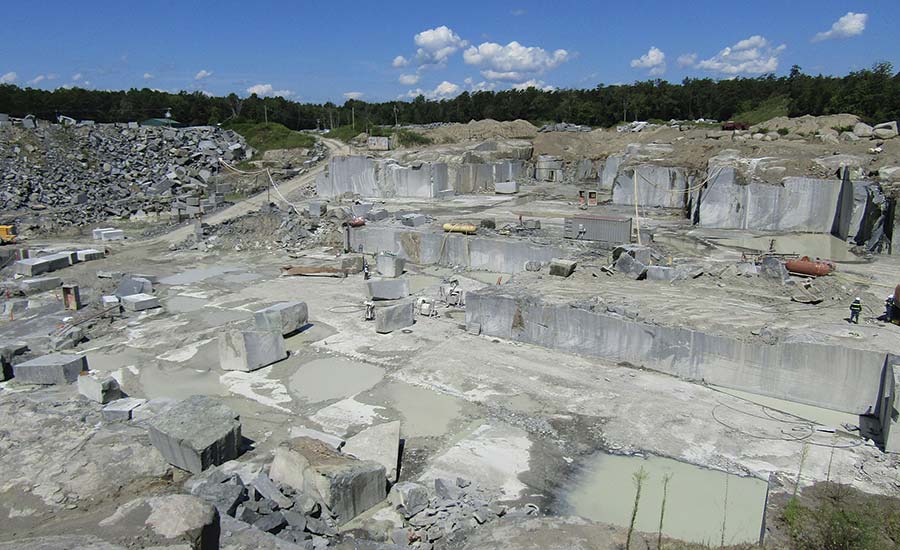The Surprise Treasures: Checking Out Granite Quarries in South Africa
The Surprise Treasures: Checking Out Granite Quarries in South Africa
Blog Article
Unveiling the Mysteries of Granite Quarrying: Where Toughness and Elegance Meet
The world of granite quarrying is a world where the raw strength of nature assembles with human virtuosity to create frameworks that stand the examination of time with an air of beauty. From the midsts of quarries to the thorough sprucing up in workshops, the process of changing granite right into architectural wonders is an intricate dance of custom and development. As we peer right into the depths of this old craft, we start to uncover the covert details that shape the extremely essence of our built environment.
The Beginnings of Granite Quarrying
In the record of architectural history, the origins of granite quarrying are shrouded in a tapestry of old craftsmanship and geological wonders. Dating back to ancient Egypt and Mesopotamia, the extraction of granite from quarries noted the beginning of a journey that would at some point bring about the production of some of the globe's most renowned structures.
Granite quarrying's origins can be traced to the experienced craftsmens who recognized the rock's sturdiness and visual appeal. With a mix of primitive tools and sheer decision, these very early quarry employees unearthed granite blocks that would end up being the structure blocks of people.
As human beings evolved, so did the methods of quarrying granite. The Romans, renowned for their design prowess, established sophisticated methods for drawing out granite to create monoliths, temples, and roadways that stood the examination of time.
The legacy of these ancient quarrying practices remains to shape contemporary architecture, with granite continuing to be an icon of stamina and elegance in construction jobs around the globe. (granite quarries in south africa)
Tools of the Quarrying Trade
The evolution of granite quarrying techniques from old people to modern-day times highlights the critical duty played by the tools of the quarrying sell forming the industry's techniques. In ancient times, quarrying devices were fundamental, typically consisting of blades, hammers, and wedges made from materials like bronze or iron. These devices required substantial manpower and time to remove granite blocks from quarries.

Furthermore, the introduction of pneumatic tools and high-powered machinery has dramatically minimized the physical labor needed in quarrying operations, enhancing worker security and productivity. As the quarrying industry remains to introduce, the tools of the trade remain at the center of driving progression and forming the future of granite extraction.
Extracting Blocks of Granite
Utilizing accuracy equipment and click this advanced techniques, the removal of granite obstructs from quarries has become a sophisticated procedure in the contemporary quarrying industry. The initial action includes identifying the location and dimension of the granite down payment to figure out the most efficient removal approach. When an appropriate site is picked, the removal procedure starts with the boring of holes for the placement of explosives. Regulated blowing up methods are then employed to damage apart the granite into workable sections.

Sprucing Up and Completing Techniques
To attain a flawless surface area on granite blocks, competent artisans utilize a collection of precise sprucing up and finishing methods. After the first extraction and forming processes, the granite obstructs go through a comprehensive polishing phase to boost their natural elegance and sturdiness.
Along with polishing, completing strategies are put on additional fine-tune the granite's look. These techniques may consist of flaming, sharpening, or brushing, each offering special appearances and coatings to suit various visual choices. Flaming, for instance, involves revealing the granite surface to heats to produce a harsh, distinctive coating, ideal for outside applications where slip-resistance is necessary. Sharpening, on the other hand, gives a matte surface that is smooth to the touch, perfect for indoor countertops and flooring. By carefully selecting and applying these brightening and ending up strategies, craftsmens pop over to this site can change raw granite obstructs right into elegant items that display both toughness and style.

Environmental Influence and Sustainability
With the growing emphasis on environmental awareness in the industry, granite quarrying techniques are progressively looked at for their effect on natural sources and long-term sustainability. Quarrying for granite can have considerable environmental effects. The extraction procedure often includes making use of heavy equipment, explosives, and big quantities of water, causing habitat damage, dirt erosion, and water air pollution. Furthermore, the transportation of granite from quarries to refining facilities creates carbon emissions, better contributing to ecological degradation. granite quarries in south africa.
To reduce these impacts and make sure sustainability in granite quarrying, sector stakeholders are taking on numerous actions. Implementing advanced technologies to decrease energy consumption and water usage, reclaiming quarried land for ecological restoration, and advertising liable sourcing techniques are some approaches being used. In addition, certifications such as the Woodland Stewardship Council (FSC) and the Management in Energy and Environmental Design (LEED) assistance consumers identify eco-friendly granite items.
Verdict
To conclude, granite quarrying is a procedure that needs specialized tools and strategies to extract blocks of granite and brighten them to a high level of coating. While the environmental influence of quarrying can be considerable, initiatives are being made to enhance sustainability techniques in the market. Overall, granite quarrying is a fragile balance between harnessing the stamina and beauty of this all-natural stone while decreasing its impact on the setting.
Report this page